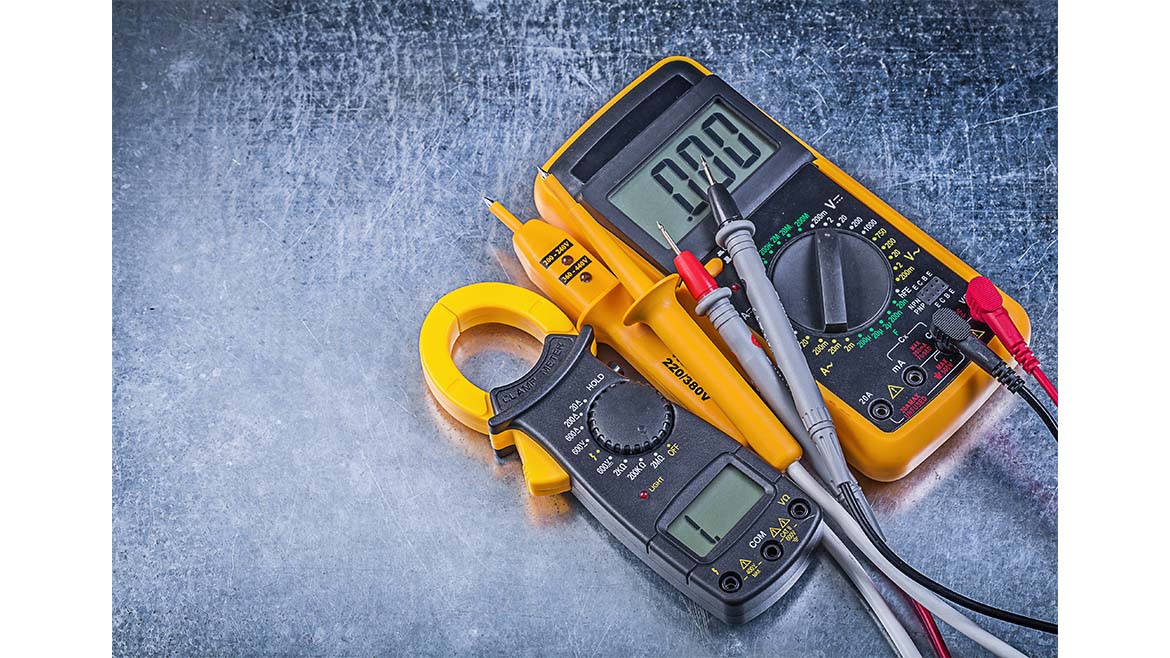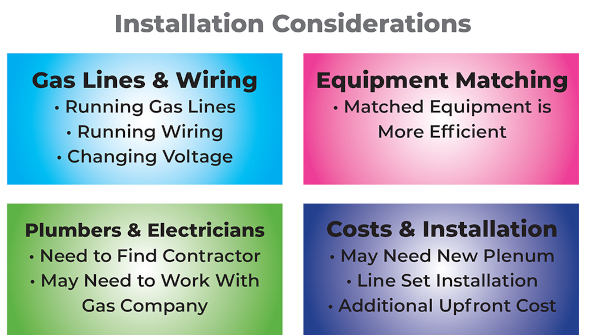Troubleshooting refrigeration equipment often requires measuring various electrical properties such as voltages, current flows, and resistances. Understanding these basic electrical fundamentals and how they relate to each other can help technicians better troubleshoot electrical failures.
Voltage is the electrical potential between two points. At one point of the voltage source, there is an abundance of electrons, and at the other point, there is a deficiency of electrons. This difference causes the electrons to flow within a circuit and its load. The greater the difference (voltage), the greater the force (pressure) that is required to push or pull of electrons through a circuit and its load. This flow of electrical energy can then be transformed into another form of energy to do work.
For example, when electrons flow through the windings of a motor, electrical energy is transformed into magnetism, which creates the required magnetic force to spin its rotor. Without an electrical source (voltage), there would be no flow of electrons and no electrical energy to be transformed into another form of energy. So when electrically troubleshooting a load or a circuit, always first verify that there is an applied voltage to the circuit or the load and that it is the correct value to allow the load to do the required work.
In addition, when measuring an applied voltage, use meter probes that will not damage the electrical connection. The standard meter probe may be too thick to fit into some locations, especially when working on control boards. If you force the probe lead into the connection, it is generally too thick. Use a meter probe with a needle tip instead, as this will allow for adequate contact without damaging the connection.
The intensity of electron flow is known as amperage. The unit of electron flow is the ampere. One ampere equals a current flow of 6.25 x 1018 electrons through a circuit in one second. At a fixed resistance, the higher the applied voltage (pressure), the more electrons will flow through a circuit and its load. Measuring the amperage draw of a load can help identify if it is operating within specifications.
For example, measuring the amperage of a compressor can help identify if the compressor has an internal issue. By referencing a compressor manufacturer’s literature for a specific compressor, you can determine its acceptable amperage draw at a specific applied voltage and specific operating suction and discharge pressure. If the amperage draw is higher or lower than stated in their literature, there is likely an internal issue with the compressor.
The opposition to electron flow is known as resistance. All electrical circuits and loads must have some resistance. A circuit with no resistance to electron flow will result in an enormous release of electrical energy and a very unsafe condition. The amount of resistance will depend on the size and type of the electrical load. We typically measure the resistance of a load to determine if the component is electrically okay. Some component manufacturers will publish the resistance values of the electrical device they produce, so a technician can determine if the component is electrically okay. When measuring the resistance of a load, always de-energize the circuit and electrically disconnect the load from the circuit. This will allow you to measure the true resistance for the load without the other components in the circuit affecting the measurement.
Water flowing through a pipe is a good analogy to demonstrate the relationship between voltage, current, and resistance. Pressure is needed to push water through a pipe, just like voltage is needed to push electrons through a circuit. Gallons per minute is the amount of water flowing through a pipe, just like current is the amount of electrons flowing through a circuit. And, the opposition to water flow is the restriction the water must move against, just like the resistance of a circuit and its loads are the opposition to electron flow.
Whether you require installation, repair, or maintenance, our technicians will assist you with top-quality service at any time of the day or night. Take comfort in knowing your indoor air quality is the best it can be with MOE heating & cooling services Ontario's solution for heating, air conditioning, and ventilation that’s cooler than the rest.
Contact us to schedule a visit. Our qualified team of technicians, are always ready to help you and guide you for heating and cooling issues. Weather you want to replace an old furnace or install a brand new air conditioner, we are here to help you. Our main office is at Kitchener but we can service most of Ontario's cities
Source link




Add Comment